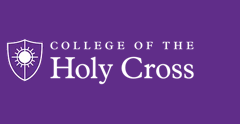Document Type
Thesis
Publication Date
12-15-2018
First Advisor
David Karmon
Department
Art
Abstract
There has always been a strong link between art and the study of science and medicine, and one of the most iconic images of suffering and death in history to date is Christ suffering on the cross. In this thesis, I examine if and how art can make it possible to transcend human pain and overcome suffering, especially in our modern society where pain is seen as something we cannot deal with, and where we look to medicine and prescriptions to diminish it. I argue that art in the states of suffering and death, closely examining Michelangelo’s La Pieta and Grunewald’s Isenheim Altarpiece, can provide a model as a response to pain. For all their differences in composition and artistic style, Michelangelo and Grunewald’s works of art encourage their viewers to focus on pain as a distinctly human experience, in which hope and peace can be found. Pain then, finds a special meaning as a “craft,” which can be made well if we assume some responsibility for our own suffering rather than turning to artificial means of diminishing pain.
Recommended Citation
Aramini, Joanna, "Art in the Stages of Suffering and Death" (2018). Visual Arts Department Student Scholarship. 1.
https://crossworks.holycross.edu/visual_arts_student_scholarship/1


Comments
Capstone thesis for Visual Arts Department.
Presented at the 2019 Academic Conference.